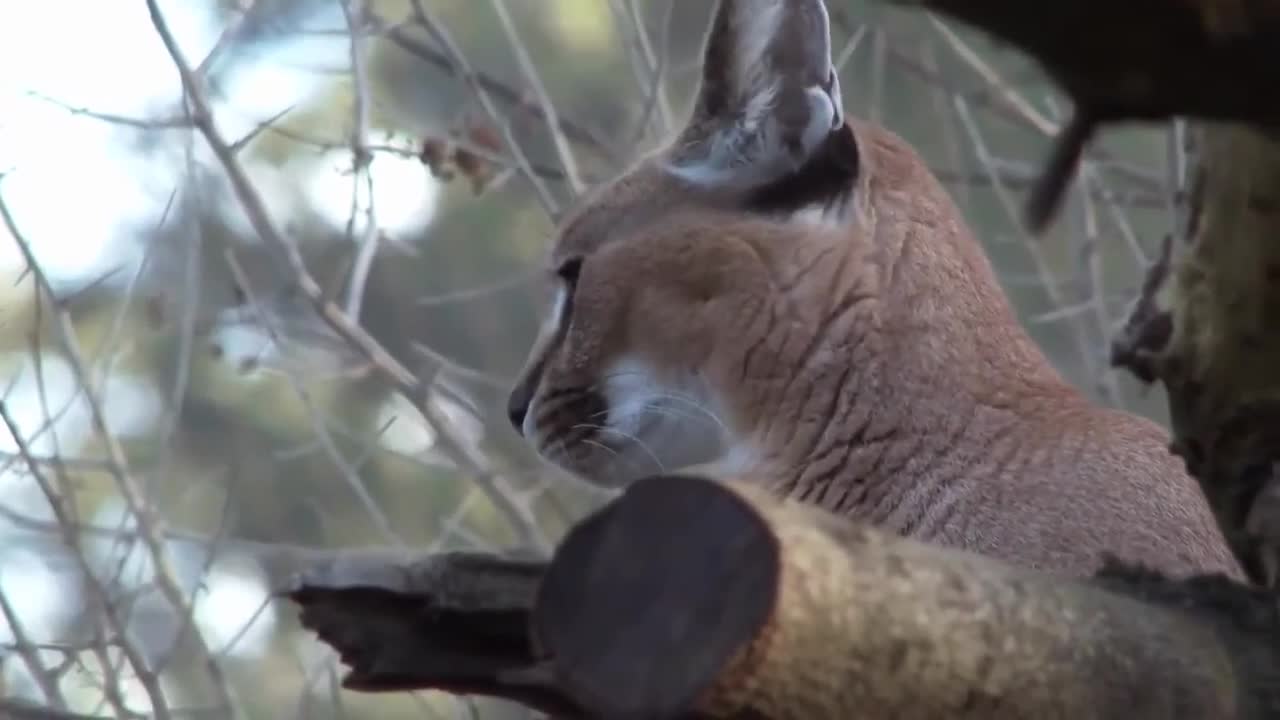Premium Only Content

The Canada Lynx Behavior
The Canada lynx is a medium-sized North American cat that ranges across Alaska, Canada and many of the contiguous United States. It is characterized by its long, dense fur, triangular ears with black tufts at the tips, and broad, snowshoe-like paws. Similar to the bobcat, the hindlimbs are longer than the forelimbs, so that the back slopes downward to the front. The Canada lynx stands 48–56 cm tall at the shoulder and weighs between 5 and 17 kg. The lynx is a good swimmer and an agile climber. The Canada lynx was first described by Robert Kerr in 1792. Three subspecies have been proposed, but their validity is doubted.
A specialist predator, the Canada lynx depends heavily on snowshoe hares for food. This leads to a prey-predator cycle, as Canada lynxes respond to the cyclic rises and falls in snowshoe hare populations over the years in Alaska and central Canada. When hares are scarce lynxes tend to move to areas with more hares and tend not to produce litters, and as the numbers of the hare increase, so do the populations of the lynx. The Canada lynx hunts mainly around twilight, or at night, when snowshoe hares tend to be active. The lynx waits for the hare on specific trails or in "ambush beds", then pounces on it and kills it by a bite on its head, throat or the nape of its neck. Individuals, particularly of the same sex, tend to avoid each other, forming "intra sexual" territories. The mating season is roughly a month long (from March to early April). After a gestation of two to three months, a litter of one to eight kittens is born. Offspring are weaned at 12 weeks.
-
 0:23
0:23
NewHampshire603
3 years agoCanada Goose Family
62 -
 1:45
1:45
Gary65
3 years ago $0.02 earnedCanada Geese goslings
36 -
 LIVE
LIVE
The Dan Bongino Show
1 hour agoCoping Hollywood Actress Says Trump Supporters Are "Uneducated" (Ep. 2379) - 11/27/2024
68,194 watching -
 UPCOMING
UPCOMING
Benny Johnson
20 minutes agoHarris Campaign SCAM EXPOSED as Drunk, Unrecognizable Kamala Posts Slurring RANT | 'Trump BROKE Her'
-
 1:35:35
1:35:35
Graham Allen
2 hours agoDid Trump Just Bring Peace In Israel?! Biden Sending $24 BILLION To Ukraine! + Kamala Is Back???
56.1K106 -
 1:56:47
1:56:47
Matt Kohrs
12 hours agoIt's Payday Friday!!! || The MK Show
20.7K5 -
 35:31
35:31
BonginoReport
4 hours agoTackling Trump Derangement This Thanksgiving: Evita + Michael Knowles (Ep.94) - 11/27/24
52K82 -
 LIVE
LIVE
LFA TV
13 hours agoTRUMP BROKE KAMALA! | LIVE FROM AMERICA 11.27.24 11am EST
1,705 watching -
 UPCOMING
UPCOMING
MYLUNCHBREAK CHANNEL PAGE
19 hours agoThe Hidden History of Budapest
4.4K2 -
 1:50:22
1:50:22
Jeff Ahern
2 hours ago $5.04 earnedNever Woke Wednesday. The Thanksgiving show!
17.1K2